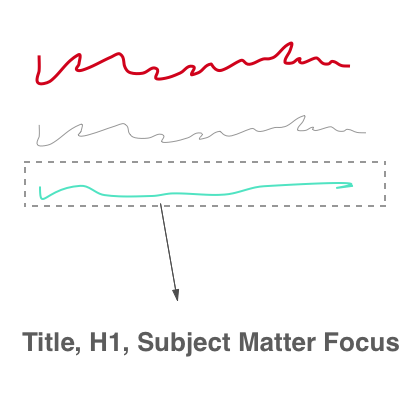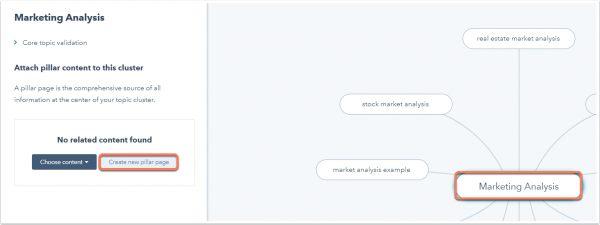
Launching a new website for a business can be a hectic period with competing stakeholder agendas. Within this launch period, it’s important to remember to focus on performance goals. SEO should be included as part of these goals. Based on our observations, we continue to see the same mistakes occur within the website design > development > launch process. This quick guide points out the mistakes we commonly see with business and corporate website launches.

Website content often becomes an afterthought during the website design process. During the site planning process, an organization should have a website content plan that includes a core topic strategy, a plan for creating content, a keyword strategy, topic clusters, core messaging, and conversion points that relate to your offerings. Too many companies attempt to rush through the website design process because they delay in making the decision to move forward with the website project. Often with attempting to rush through the website process, content is the first item that is neglected.

Too often, website sections are launched without enough supporting content. The ratio of links from navigation outweigh the amount of text content that appears on the page. Search engines would view these pages as ‘thin.’ In addition, the amount of repeatable sections may also outweigh the amount of original content which further harms the website’s ability to rank and demonstrate authority for the page topic.
Having a site map and keyword strategy go hand in hand, because keywords and topics should be at the heart of the site plan if a search engine strategy is an important growth channel. The most relevant key phrases to an offering should appear in top level domain addresses, in structured headers (H1, H2, etc), and in the page content.

Planning and using keywords and key phrases within your content plan will improve relevancy. Your website should have a mix of broad, competitive keywords and phrases, as well as a mix of longtail or niche key phrases that support the competitive topics. To avoid structuring primary navigation pages around keywords with low to no search volume, keyword research should be conducted at the early stages of planning.
The overall layout of a website should make sense to both human and machine users. This means creating new child pages for fresh topics that relate to an existing page, and placing internal links in places that help to fuse related pieces of content together. This creates what WordStream calls a “pyramid of relevance,” which places more important topics at the top level of a site and pages about related topics branching out under each one. HubSpot has also created a nifty visualization and testing tool for SEO called “Keyword Topic Clusters.” In this strategy planning tool, website designers can visualize their topic clusters and check relevance and key stats for planning site architecture.

The real work begins after launch. Most companies don’t realize the importance of the post-launch process. In an agile website design process, a company would ideally launch a smaller website with a selection of key pages and then proceed to launch more pages, navigation items, content sections, and conversion points in the weeks and months after.

It's important to continually improve and expand a site after launch, but many company stakeholders see a website process as a one-time event. This needs to change. A better strategy would be to reduce the time to launch by launching a smaller and more nimble site in the beginning. This speeds up the time to market--and removes your legacy presence. Once the new site is launched, the web and content teams continues to add, expand, and improve--while studying analytics.
Additionally, web teams should employ the following during and after the launch process:
Title tags occupy a crucial piece of real estate within Google search results, and when done properly, they can gently push a user into choosing one site over the other. The trick with title tags is hitting the balance between including all of the components search engines want to see and writing something that compels the user to click. Two common mistakes that will definitely cause an issue for a site are:
Repeating title tags: Title tags can be tedious to write, especially when dealing with a large site or an e-commerce site with many similar product offerings. Unfortunately, these are the cases where clear title tags are needed the most. Not only are they important for SEO, they can make or break the user experience. Imagine that a prospective lead knows the exact product they want, the size they need and the color they prefer. They want to purchase the item as quickly and easily as possible. A good title tag that includes those keywords is the easiest way to get this lead to come to a site and convert instead of going to a competitor.
Forgetting or repeating H1s: While H1s might not appear in search results, they play a vital role in helping search engines understand what each page is about during the indexing process. They often present a great opportunity to work keywords in naturally and are naturally eye-grabbing to readers.
Make no mistake about it, there is a certain satisfaction in seeing a site climb the search engine rankings or watching Google provide your answer in a featured snippet. But none of these small victories that feed the ego will actually bring money into a business. Rankings are great because they bring in more traffic, but that traffic has to convert if the business wants to make sales.

Approaching a website like a brochure is a waste of time, period. A website strategy must focus on conversion optimization in both the pre-launch and post-launch period. Creating and testing conversion pages and points within a website is an ongoing activity. Also, providing better content that solves the pain points of prospects and includes a strong call to action is proven to convert, because it compels readers to take action within these conversion points.
After years of working in site design, a designer might think he or she knows exactly how visitors are going to behave once they get on a site. The actual numbers that come in from analytics and other tools might surprise and defy understanding.
The way people behave on the internet is constantly evolving, partly because search engines and social media networks are always changing, requiring the consumer to adapt. As a result, designers and marketers have to be ready to make changes to optimize how a page performs.
Once you understand the larger impact of these common SEO mistakes, it becomes more evident why it’s worth preventing them from happening in the first place. The marriage of SEO and web design might be a challenging one, but so are some of the most successful unions. Many of these issues arise because of the “let’s get it done attitude” that stakeholders take. Instead, of seeing a website as an ongoing investment, they plan and budget for a website as a once-in-every-3-to-4-years exercise. A critical path for building a high-performing website is to start with the right expectations and an understanding of the common pitfalls. We help this article helps with this.
by Jonathan Franchell, CEO of Ironpaper - For more tips and hacks: Need to remove a new line after h1 tags? Both web designers and SEO practitioners need to employ headline tags: H1, H2, H3 in several ways to improve web page structure and tag...

The Crowded Arena of the IT Marketplace Updated December 2024 The Information Technology (IT) landscape is experiencing rapid growth and intensifying competition. IT spending is projected to reach nearly 5.1 trillion U.S. dollars in 2024, a...

The marketing industry is transforming significantly due to generative AI and increasing market complexity. Gartner's prediction of a 25% decline in traditional search traffic suggests that the era of search engines is dying. AI tools, particularly...

Updated December, 2024 The field of digital marketing is evolving rapidly in response to new technology and changing buyer expectations. To help career-minded marketers, we’ve rounded up the top 10 skills needed to succeed in the field. These are...
